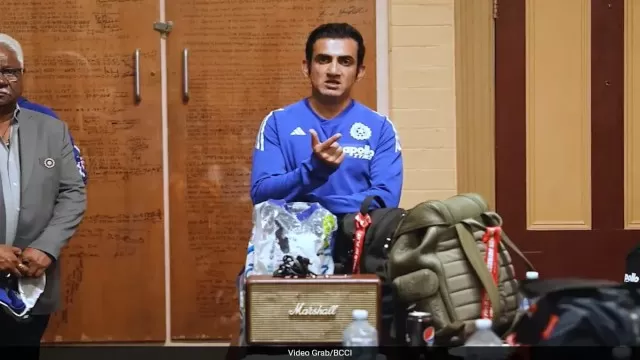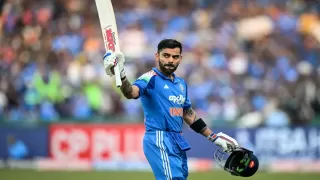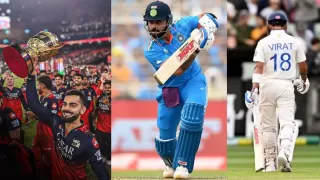Gautam Gambhir Praises Rohit, Gill—Then Says This on Kohli

From the moment the dressing-room doors closed after the third ODI against Australia, there was a tangible shift in atmosphere — the kind of quiet confidence that speaks louder than celebratory noise. Gautam Gambhir, the head coach of Team India, stepped forward not just to congratulate his players, but to deliver a message that combined praise with clear expectations. For the opening duo of Rohit Sharma and Shubman Gill, Gambhir’s words were warm, affirming their rising momentum. For the veteran Virat Kohli, dormant discussions suddenly found voice — recognition, yes, but also a reminder that even legends must keep meeting standards.
In a series that had seen its fair share of scrutiny for India’s batting units, the third game offered a breath of relief: clarity in pursuit, composure at the crease, and a finish that left little room for doubt. Gambhir’s address to his squad dug into all of that — the structure, the partnership, the process — and painted a broader picture of what the team is capable of. More importantly, it outlined what they are expected to be.
The Lift-Off: Gill & Rohit Set the Stage
When chasing a modest total of 237, India’s top order needed to give the innings a firm launch. Gill and Rohit did exactly that, putting on 69 runs for the first wicket and giving the rest of the batting lineup the platform to operate from. Gambhir underscored how significant that start was, calling it “very, very important” when the score was 60 for no loss in the early overs. (Source)
That opening stand did more than just keep India in the hunt — it allowed the pressure to shift. Instead of chasing, they began controlling. And control is exactly what Gambhir emphasised when he spoke on how the stand had set the tone. It wasn’t flashy; it simply did what it needed to, and in doing so spelled the difference between a nervy chase and a paced one.
Gill, relatively new to these big moments, showed maturity, while Rohit, the ever-reliable elder statesman, did what he’s done countless times before: anchor when others feel the heat. Together they built the groundwork. Gambhir’s praise for them in this phase was as much about this moment as it was about the future — about youngsters earning trust and leaders reaffirming theirs.
The Classic Ro-Ko Revival: Rohit & Kohli Take Over
Just as the foundation felt secure, Rohit slid into his familiar rhythm and paired with Kohli to produce an unbeaten 168-run second-wicket partnership. Simply put, it was a throwback to moments when India’s batting felt invincible. And Gambhir didn’t hold back in recognising that: “And then the partnership between Rohit and Virat was again outstanding… special mention to another 100… outstanding,” he said. (Source)
What makes this stand so noteworthy isn’t just the magnitude of runs, but the context — veterans subduing the chase while unbroken. In Gambhir’s words, that element of finishing was “very important from the team’s point of view … and how clinical we can be in these chases.” (Source)
In that moment, the Ro-Ko (Rohit and Kohli) machine had flickered back to life, reminding even the critics that age may approach, but class is timeless. Gambhir’s praise wasn’t sentimental — it was pointed: you are doing it when it mattered, and that sets a standard for everyone else.
Coaching Wisdom: The Message Behind the Words
Gambhir’s dressing-room speech held layers. On the surface: congratulations. Beneath: expectations. Opening partnerships matter. Finishes matter. Unbeaten knocks matter. They matter because the team needs momentum, belief, coherence.
He chose two phases to highlight: the initial assertive 69, followed by the dominant 168. Implicitly, he mapped a blueprint: start strongly, build steadily, finish with conviction. He also emphasised “how clinical we can be in these chases” — a phrase that lifts this away from mere praise and into mission mode. (Source)
For Kohli, it was a reaffirmation rather than a critique. Gambhir’s words did not single him out for anything lacking — instead they praised what was delivered, while reminding that in the frame of team culture, finishing undefeated carries weight. It’s as much about making the senior players feel valued as it is about setting the bar for others.
What This Means for Team India Moving Forward
For Team India, this episode could mark a subtle if crucial pivot. It signals that the management believes the top-order engine is running again; that youth and experience are aligning; that the chase no longer needs drama. Instead, it can be methodical, structured, confident.
Gill’s participation signals the transition zone — a young man stepping into big shoes, earning the spotlight, gaining trust. Rohit and Kohli are reminding the world that their fire still burns. The fact that Gambhir chose to highlight both arcs suggests the team’s identity is now about integration: no hierarchy of age, just performance.
And in his address, Gambhir did more than praise specific stands — he reminded the dressing room what it feels like when things click. The timing was apt, the message clear: you were good today — now stay consistent tomorrow. This kind of messaging goes beyond the scorecard. It shapes culture.
The Legacy and the Here-and-Now Tension
Naturally, when Rohit and Kohli bat like this, thoughts turn not just to the match but to legacy. Kohli had two ducks earlier in the series, and Rohit had one eye on the twilight of his ODI career. That they combined so emphatically is more than cricket; it's narrative. Gambhir is aware of that duality — the now and the afterward.
His comments about finishing unbeaten, about being “very good” in clinches, hint at deeper intent: the team must become reliably sharp, not episodically brilliant. In a world where cricket careers shorten, where formats multiply, the value of finishing unbeaten isn’t just statistic — it’s emblematic of mental resilience, collective fitness, leadership in action.
For veterans, the message is: your legacy is safe if your performance is now. For younger players, the message is: study the elders, match them, then evolve. Gambhir’s speech effectively bridges the past and the future — showing that both can coexist, and better yet, thrive together.
Final Word: On-Field Brilliance, Off-Field Leadership
In watching the Rohit-Gill opening spike followed by the Rohit-Kohli finishing surge, the scoreboard tells one version of events. But Gambhir’s words give us the other version — the one behind the numbers. A mentor noticing the right things, a captain recognising the system, a dressing room uniting around clarity.
Cricket, after all, is as much about what happens off the field as on it. When a coach speaks in the dressing room and the players listen — truly listen — you sense more than satisfaction. You sense direction. And when the coach uses words like “very important”, “outstanding”, “clinical” — he isn’t simply praising; he’s defining what the next chapter must look like.
This is no longer just about winning one match or finishing a series. For Team India, it is about recovering identity, cohesion, and confidence. And when the men at the top deliver — Rohit, Kohli, Gill — the message is clear: follow that example, raise your bar, and march forward. Gambhir has laid the foundation. Now the players must build.
Also Read: Two Australian Cricketers Molested in Indore Shock India
Disclaimer
Possible11 is a sports news platform that provides live scores, player statistics, and tournament updates for informational and educational purposes only. We comply with the Online Gaming Bill, 2025 (India) and do not promote or engage with fantasy sports, betting, or real-money gaming platforms. All content is intended solely to enhance the sports experience. Possible11 is not affiliated with any fantasy or gambling applications and is not responsible for any financial gains or losses incurred on external platforms.












Give Your Feedback